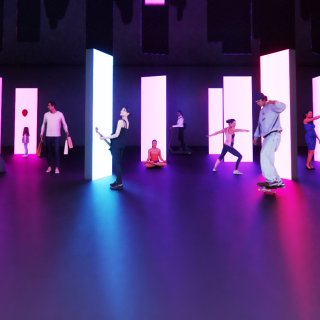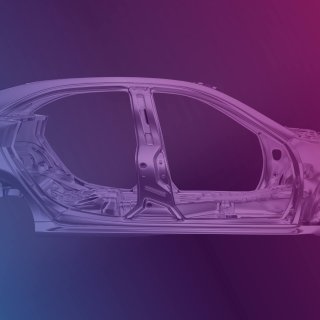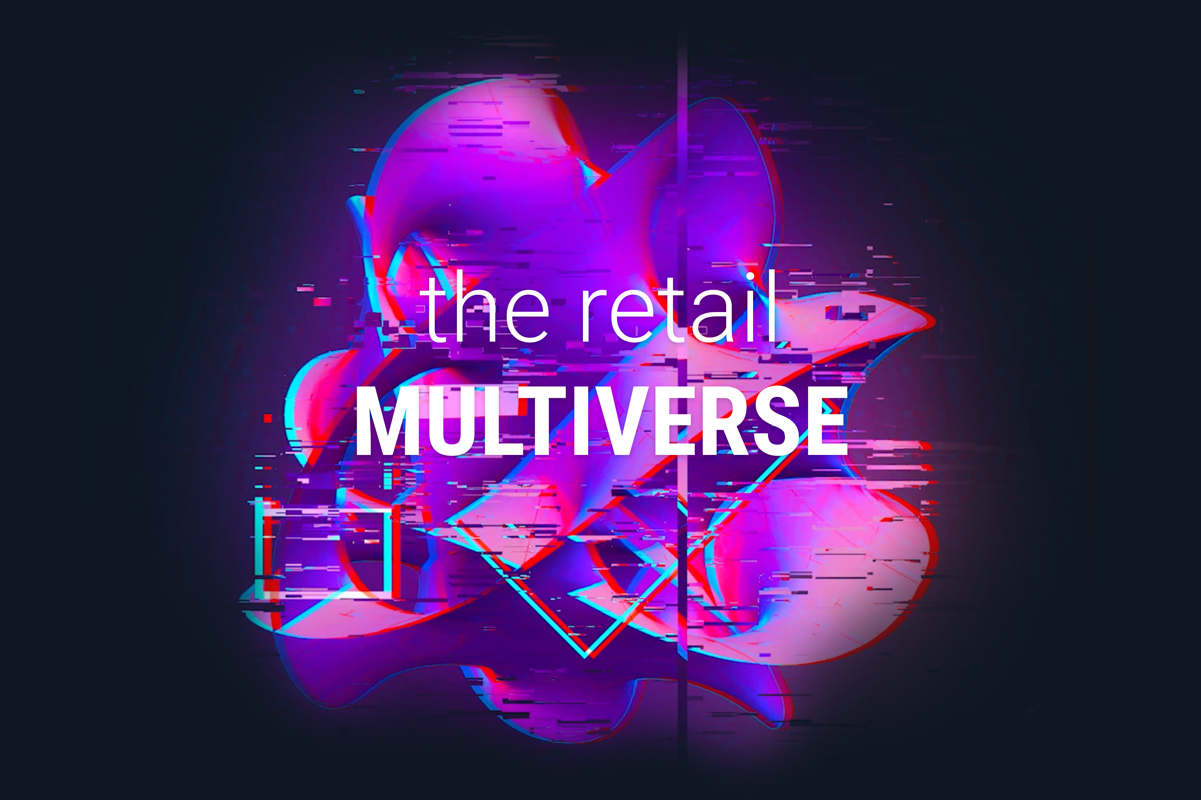
The Retail Multiverse as a Survival Strategy for Downtown Retailing
The stationary retail is in the midst of the greatest upheaval in its history, a structural change towards digital business models in which consumers increasingly find themselves, because they see advantages in it: 24/7 ordering from anywhere, fast, easy navigation and delivery sometimes within minutes, mediate the illusion of unlimited availability.
The pandemic has turned our lives upside down and accelerated digitization. Initially, lockdown, homeschooling, and work from home made people arrange themselves homely with it ("Home Nesting") and use the Internet more than ever: they ordered from online retailers, zoomed with friends all around the world, played games over the internet ("Among Us") and watched the streamed favorite series together and all at once (Binge-Watching). Even weddings on a virtual island ("Animal Crossing") were suddenly popular. The pandemic closed the digital gap between generations.
Retailers are facing a change in paradigms where they need to offer services and experiences to different people at different times, while the respective customer journey can be completely different. This challenge is no longer one-dimensional, but multifaceted. The future of retail is a "multi"-approach, reinterpreting spatial experiences and digital shopping conditions.

Digital as "the new normal" - Covid as a fire accelerant for new consumer behavior
Digital became “the new normal”. Businesses, healthcare providers and entertainment came into the homes. Virtual tours and video consultations boomed. Online shopping and delivery services such as "HelloFresh” or "Uber Eats" became attractive for older generations as well. “The new normal" is admittedly a matter of survival for the physical retail. Will it succeed in reawakening buying mood after part of the clientele already seems to have been lost to online stores? And how can that be successful?
Retail is moving towards a multiverse, offering services and experiences to different people at different times, while the respective customer journey can be completely different. This multiverse is no longer one-dimensional. The future of retail lies in a multiple approach, where analog experiences and digital shopping mutually define and reinforce each other.
This white paper identifies the four drivers on the way to becoming a retail multiverse and opens new perspectives for the future of brick-and-mortar retail and city centers.
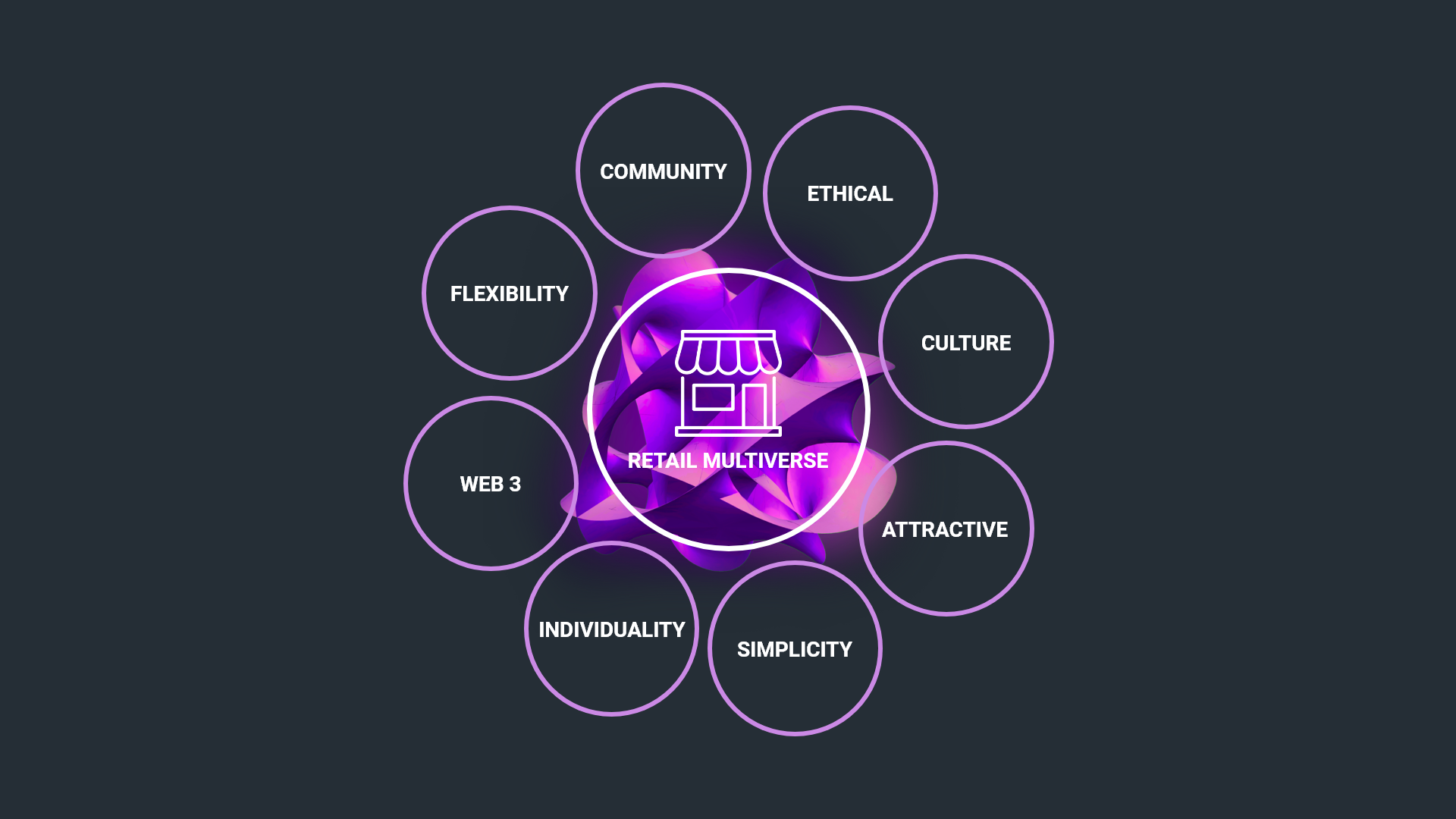
Departure into the Multiverse: Four Drivers of Change
For a long time, the usual strategy has been: The retail must become a "destination". After the pandemic, that won't be enough. Four developments accelerate the move towards the multiverse.
Convenience
Customers expect quick responses, ad hoc services and immediacy triumph over customary loyalties.
Community
Corona has strengthened the desire for an exchange in real life.
Ready for Action
We want community and experiences after the standstill, from job to leisure. And we want it immediately.
Sustainability
Mindful brands for mindful customers.
1. Convenience: speed beats loyalty.
Corona and digital services have changed customer behavior. Deliveries happen promptly and to the front door, online services such as "Guerrillas" and new options such as on-site self-check-in make the power of convenience very clear. The instant delivery of groceries and food within 10 to 30 minutes represents a real challenge for retailers and will shift priorities in the customer journey - from a long-standing relationship (loyalty) and the familiar contact to convenience and simplicity. Retailers should respond to these challenges.
Convenience and "fast retail" will challenge the retail as new customer experiences. If we can get a product delivered to our door within half an hour, why would we still visit a retail store? Simplicity and convenience will triumph over loyalty, if products and services from competitors are easier to acquire or to experience.
2. Community: real life exchange.
On the physical side of the experience, a whopping 90 percent of all customers look forward to returning to shop downtown at local retailers. 46 percent want to go to restaurants and cafes. The most important thing is and has been, to meet in a welcoming environment to exchange ideas. Diversity and a unique character got lost in many cities. “Monocultural" offers left city centers deserted after hours. Parallel to the emerging e-commerce, customers were increasingly looking for specialist stores and destinations that met their need for individuality.
Customers have long expected experience shopping with a great variety and diversity, mixed uses, short distances, and offerings that are more than mere presentations of goods and that turn a stay on site into an experience. In Germany, shopping temples such as KaDeWe (Berlin), Oberpollinger (Munich) or Breuninger (Stuttgart) use this recipe for success. They are destinations with gastronomic offerings, shopping services and a sophisticated calendar of events. As affordable residential space tends to become increasingly scarce, "third place living" is becoming more and more important: the café, the lounge or the park bench supplement or replace what is missing in apartments: space for community.
The thirst for community is not only noticeable in the physical world. The rise of digital worlds gives new meaning to communities and shows what the future holds for the development of Web 3.
The gaming industry has paved the way and created multiplayer worlds where users can interact, complete tasks, find friends and, in some cases, even get married. Games such as "World of Warcraft," "GTA," and "Second Life" provided the first blueprints for how people could interact online via an avatar and what the experience could look like.
We can argue that part of the generation of the Millennials is prepared for the metaverse because of their previous experiences or touch points with the gaming industry. We can assume the same for the Generation Z and Generation Alpha as "new" gaming worlds are launched that have integrated different interaction styles like Fortnite and Roblox.
Right now, it seems as if the fashion industry is leading the way and luxury brands are transferring a trend from the real world to the digital world:
Due to this online presence in digital worlds, it is no wonder that celebrities and brands use the exploding communities as a marketing arena: Ariana Grande with her Fortnite-Tour or Gucci with designs for [i]. The luxury brand is translating a trend from the real into the digital world: our external appearance determines how we are perceived by the community. In the digital world, of course, we can create a whole new personality, an avatar that shows how we want to be seen. For gamers, this perception can be more important than the game itself, as brands facilitate change and acquire new brand loyalty.
How sustainable will the metaverse determine our lives? We will have to wait and see to what extent its icons and avatars will hold their own in the long term. Or whether the desire for real experience will not prevail after all and proxy life will remain only an intermezzo. As we are only at the beginning, the challenges of further developing digital communities and metaverses will be determined by the acceptance of the customers and developers.
3. Thirst for action: experience something together
We believe that the lack of experience in recent years has created a desire for a shared sense of belonging. Generation Z pushes to meet friends again in schools and universities, visit bars and clubs and party all night, while Millennials and the Generation X were coping better with staying at home. But they long for familiar routes, even if the old normality may no longer materialize: shopping trips, visits to cafés or weekend excursions to Paris, Amsterdam or Milan. Travel is arguably becoming more sustainable, more conscious, but it's still about exploring new territories.
They expect retail to provide impetus and inspiration for their thirst for experience and they shifted to discovering unique stores while traveling. The challenge we derive from this, is: How can local retailers create an experience as unique as a vacation trip?
4. Sustainability: brands for mindful consumers
Surveys suggest that almost half of those surveyed would like to buy more sustainable and environmentally friendly brands in the future: This corresponds to an increased awareness of corporate culture issues, i.e. questions about how entrepreneurs care for their employees, what they really stand for and what they give (back) to the community ("Purpose"). In the long term, globally active companies will have to face the question of what contribution they make to society as a whole. A holistic approach, that encompasses all dimensions of sustainability, is required. Nowadays especially its social dimension is almost on a par with economic and ecological aspects.
What does this mean for brands?
1. Sustainability has to be lived, but also communicated. More than one-third of the consumers wants more information about the sustainability of brands. Communicating sustainability at the point of sale does not only catch the attention of attentive consumers, but also empowers them to take better decisions.
2. Brands should place special emphasis on engaging the local community. Collaboration with (other) local businesses and shared spaces that can be used by all create a sense of belonging and foster mutual understanding between brand and customer.
The challenge for the brand industry and its creators is circular value creation. Customers will not compromise on brand and quality standards but will place increased demands on reusable materials and circular design. This presents designers with the task of intensively addressing the holistic requirements of a Circular Society and its consumers.
The survival strategy for stationary retail
Demanding customers have - loosely based on Oscar Wilde’s words – a very simple taste: they are just satisfied with the best. They value five things above all: attractive opening hours and a good location, friendly advice, consistently good quality, and short travel distances. And this applies across all age groups and digital affinities. But what does that mean in concrete terms for retailers? Four theses:
Alone is too little
Networks and "alliances of real estate owners, users, city administration and politics" are needed, says Prof. Dr.-Ing. Silke Weidner, President of the Knowledge Network City and Retail at a conference of the RID Foundation, because retail will "continue to assume an important function in the city center, partly in other typologies, sizes and orientations (no separation of stationary and online) as well as operating forms."
Profitability is not enough
Stakeholders and investors must face their responsibilities. If the city becomes the living room that residents of micro-apartments necessarily need, this means making the communal resource of space accessible to all through local initiatives, community offerings, and hybrid spaces that sometimes become exhibition space, then pop-up store, then café again.
Worlds of experience are (only) the first step
It is no longer enough for retail to become an experience (or to further expand this role). Flexible concepts are needed to ensure that shopping locations combine competent advice, service and quality of stay - and that across all media and platforms. Concepts that see responsibility and sustainability not only as part of a marketing campaign, but that also live co-creation, local responsibility and transparency.
Diversity is in demand: multiverses
in which responsibility, community, and design (creativity) come together naturally. Consumers become users and co-creators. Here, new connections of production and use can grow, in which sustainability and more awareness of corporate culture belong together. Companies will have to ask themselves what contribution to the community they provide. Only those who can credibly communicate the purpose of a company will survive in the future.
Entry into the retail multiverse
Retail of the future, confronted with new consumer behavior and forced digitalization, must take several approaches at the same time: Flexibility, sustainability, convenience, community and the drive for novelty are some of the drivers that make retail a multiverse.
The traditional retail space must be a medium for continuous change, flexibility and sustainability to keep pace with the ever-growing and constant changes of our interconnected world.
Manufacturers, retailers and designers must collaborate to create multiple universes, multiple solutions, that make innovations and surprising experiences in retail possible.
The retail space must be a continuous metamorphosis, a space of response, dynamism, ethical consumption, simplicity and flexibility. Welcome to the multiverse of retail.
What follows from this?
Confronted with new consumer behavior, rising expectations regarding sustainability and ethics, and accelerated digitization, the retail of the future will take multiple approaches at once and evolve into a multiverse: more convenient, more flexible, more sustainable, more innovative, and more community-building than ever before.
The retail space is in continuous transformation to keep up with the changes of our interconnected world. Retailers and designers will collaborate to create multiple universes of surprising experiences. It will continuously change into a dynamic space of ethical consumption. Design can give new power to the retail of the future.
If stakeholders from politics, the real estate industry, brand manufacturers and trade associations consistently place the needs, desires, wishes of customers, users and citizens at the center of their actions, a new view of things is possible.
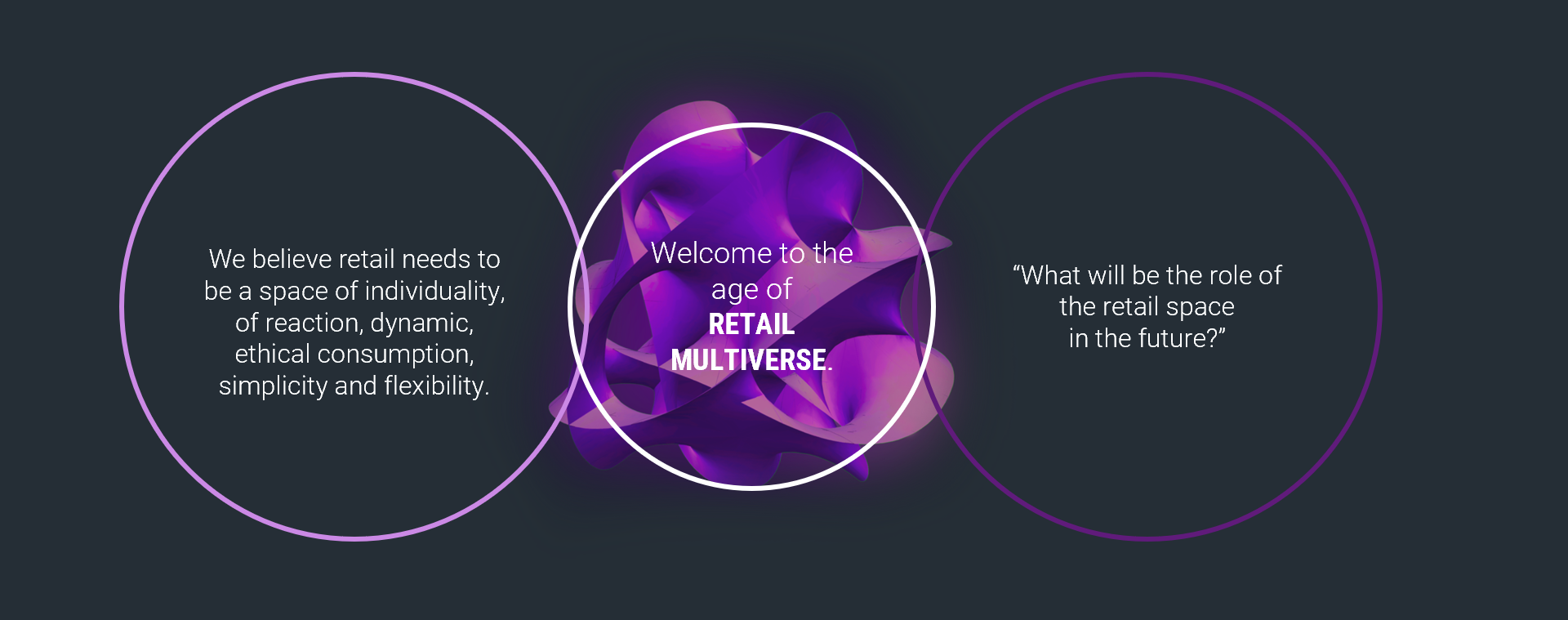
How can these insights be used to open a new scope for action?
A single perspective no longer does justice to the complex process of change. Therefore, rpc perspectives combine sociological, design and data-driven approaches to an interdisciplinary exchange that creates new perspectives and opens thinking spaces.
At rpc, the focus is on the customer. Customer experience design and digital transformation ensure the future viability of companies. Experience-oriented interfaces between people and brands create an emotional positioning.
Authors:
Maike Burger, Vladimir Moldovanu, Sophie Lankheit
Quellen:
[i] Gucci Garden“ präsentiert sich so: „Zeitgleich mit Gucci Garden Archetypes, einer multimedialen Zelebrierung der unnachahmlichen kreativen Vision des Hauses, öffnet ein virtueller Gucci Garden-Ausstellungsraum auf Roblox allen für zwei Wochen seine Türen. Während Besucher die interaktive, virtuelle, von Gucci Werbekampagnen inspirierte Ausstellung genießen, verwandeln sich ihre digitalen Avatare in Ankleidepuppen, die Ausstellungselemente absorbieren und selbst zu einzigartiger digitaler Kunst werden. Dabei können Besucher aus einer limitierten Kollektion von Artikeln für ihre Avatare wählen, die allein für dieses Erlebnis erschaffen wurden. Erfahren Sie mehr auf roblox.com/guccigarden“. https://www.gucci.com/de/de/st/stories/article/gucci-gaming-roblox





